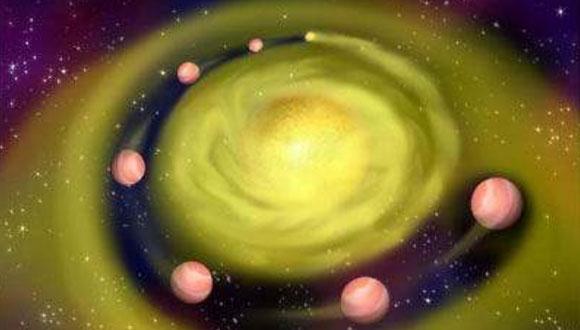Research Field - Planetary Sciences
This field deals with the space close and far from Earth, including the planets and their moons, comets, asteroids, the interplanetary space, and of course the Sun. Planetary scientists also study the ionospheres and magnetospheres of planets that are found hundreds to thousands of kilometers above the planet's surface. These are also the regions where satellites orbit and therefore the field of Space Weather is important to study the interactions between the space environment and satellites.
Planetary research focuses on the structure of the Earth-like planets (Mercury, Venus, Earth and Mars) and the giant planets (Jupiter, Saturn, Uranus and Neptune), their moons and the theories of how the Solar System was formed. Research on these topics is trying to answer questions like: How are stars formed? How are planets formed in our solar system and outside our solar system? How was our moon formed? Is there water on Mars now, and was there liquid water in the past? Are there signs of life on Mars? How were the disks formed around the giant planets, and what does that tell us about the formation of these planets? What are the characteristics of the atmosphere of Titan (moon of Saturn)? Why is Uranus' orbit around the sun so different to all the other planets? What is the composition and structure of comets? What are the chances of Earth being hit by an asteroid or comet?
A great deal of research has been carried out regarding comets, the structure and composition of their core, the halo and tail of the comets, the origins of comets and asteroids, and the connection between comets and the origin of life on Earth. The research combines observations, lab experiments, and theoretical calculations. In our department we are leaders in comet research, and our researchers have contributed greatly to our understanding of how comets form, the processes that occur as comets approach the Sun, and their contribution to life on Earth.
Research related to our Sun focuses on the physical structure of our star, the nuclear processes occurring within (nuclear fusion of hydrogen), and how these processed are translated to processes observed on the surface of the Sun. Solar research includes studying the solar wind and the impact of solar storms (space weather) on the atmospheres, ionospheres and magnetospheres around the planets.
Research on the interplanetary medium involves studying the complicated interactions between the space medium (particles, magnetic fields, radiation) with the planets, moons, space ships and satellites. The interaction with satellites has many practical applications, such as radio communications, GPS navigation, remote sensing from space, telecommunications, weather satellites, etc.
In order to understand the basic processes around the planets and their moons, we need to use mathematics, physics and chemistry in field such as kinetic theory of gases and plasmas, hydrodynamics and magneto-hydrodynamics, fluid mechanics, nuclear, atomic and molecular physics, optics, chemical kinetics and thermodynamics.
Researchers:
I am interested in the formation, structure, and evolution of planets in our solar system and around other stars. To understand the processes involved I have studied the physics of grain and aerosol growth in planetary atmospheres and in circumstellar disks, the structure and thermal evolution of comets and KBO's, and the flow of gas and dust in these bodies. I have also investigated the structure and evolution of gas giant planets, and how they evolved to their present state.
Comets: the internal structure and composition of comet nuclei, modeling heat and gas flow through the porous nucleus, evolution of comet nuclei in orbit around the sun, early evolution of comets and radiogenic heating, activity of comets, cometary outbursts.
Planets and satellites: numerical models of planets (e.g., Mars) and ice-rich satellites (e.g., Enceladus), including radiogenic heating, phase transitions, differentiation, production of water.
Stellar evolution: numerical simulation of the evolution of stars, long-term evolution of novae, characteristics of nova outbursts, white dwarf growth towards supernova explosion.
Study of Binary Stars and extra-solar planets using ground-based observations and astronomical space missions (mainly Gaia), statistical studies of known extra-solar planets, celestial mechanics, analysis of astronomical time-series.


